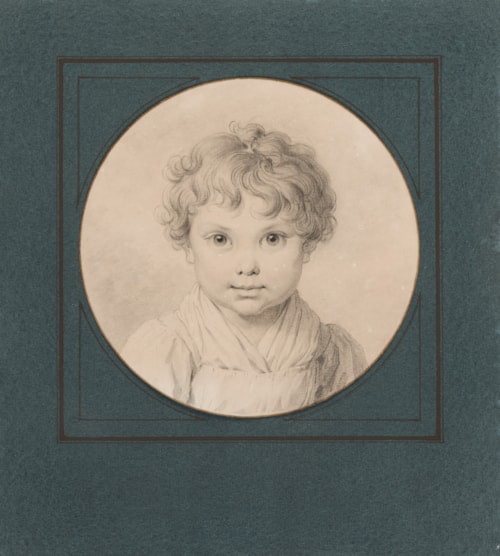
Jean-Charles TARDIEU
Paris 1765 - Paris 1830
Biography
Jean-Charles Tardieu - also known as Tardieu-Cochin after the small legacy left to him by his father’s cousin, the printmaker and draughtsman Charles-Nicholas Cochin - was from a family of eminent engravers. His father Jacques-Nicolas Tardieu and paternal grandfather Nicolas-Henri Tardieu were both academicians and graveurs du roi, while his mother Claire Tournay and paternal grandmother Marie-Anne Horthemels were also professional engravers. Breaking with family tradition, however, Jean-Charles Tardieu trained as a history painter in the studio of the painter Jean-Baptiste Regnault between 1786 and 1789. He obtained second place in the Prix de Rome competition of 1790, and made his debut at the Salon three years later. Tardieu maintained a successful career through the successive upheavals and regime changes of the time, regularly exhibiting important paintings at the Salons. He enjoyed the patronage of Napoleon, Louis XVIII and Charles X, and received official commissions for various imperial and royal residences, such as the palaces of Luxembourg, Versailles, Saint-Cloud and Fontainebleau. Among his significant official commissions was a painting of The Emperor Napoleon Receives the Queen of Prussia at Tilsitt, exhibited at the Salon of 1808 and today at Versailles, while an allegorical painting on the birth of the Duc de Bordeaux was acquired by the city of Rouen at the Salon of 1822 and is now in the Musée des Beaux-Arts there. Tardieu also painted subjects from French history, such as Sully and Henri IV of 1805 and The Clemency of Louis XII of 1818. He also painted evocative genre scenes, notably a Market Scene in Paris, shown at the Salon of 1814 and today in the Louvre, as well as a handful of portraits, some of which were exhibited at the Salon of 1812.


